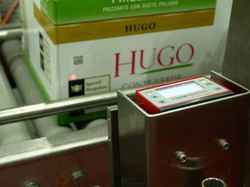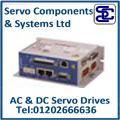
Posted to News on 15th Apr 2015, 10:41
Smart cameras for smart inspection systems in beverage industry
In the case of the LSIS 400i smart camera series, "smart' stands above all for clever functions and a wide range of interfaces for intelligent networking and for integration in control systems. Bernhard Voigt from Voigt Technology e.K. uses the LSIS 400i smart cameras from Leuze electronic to realise smart inspection systems for the beverage industry.

"Inspection systems in beverage filling systems are often highly customised solutions that are implemented between the individual process steps," explains Bernhard Voigt, who, with decades of experience as a service technician in the beverage industry, has specialised in the development and realisation of solutions in all areas of process and quality control.
Voigt continues: "Often, new control steps are required due to increasing quality requirements or there are extensions to control steps made in the course of system expansions in existing lines." The range of inspection systems in the field of beverage filling systems ranges from the inspection of empties and full case checks to bottle contour detections, fill-level monitoring, the inspection of caps for incorrect mounting, and label inspections to rejection systems and other similar functions.
One of Voigt's most recent projects is the equipping of filling lines in the traditional sparkling wine winery Herres, located in Trier, with inspection systems for detecting and checking printed 2D Data Matrix codes on sparkling wine boxes.
As in many of his other applications, Voigt uses the sensors from Leuze electronic here as core components - in this case, the smart cameras of the LSIS 400i series. These have the advantage of incorporating all necessary components for image processing in a single device, i.e. illumination, data memory and interfaces, including display for operation and result displays. No additional connection unit or separately installed configuration software is required.
The LSIS 462i device versions used by Herres are the all-rounders of the series and combine functions for quality control (measurement function) and code reading in one device.
Horst Meyer, head of mechanical engineering at Herres, explains the advantage of these smart cameras for maintenance and repair: "For code reading, we use the LSIS 462i all-round version, because we already successfully use such devices in other applications, such as for image processing in the scope of cap monitoring. This allows us to limit spare-parts inventory to one fully equipped device model that we can use everywhere if necessary."
Clever functions
Particularly advantageous with respect to the damp environment in beverage production is the robust design of the smart camera in a metal housing that is suitable for industrial use. Other key features are the motor-driven focus adjustment and the homogeneous illumination developed by Leuze electronic.
The motor-driven focus adjustment permits flexible use for applications with varying camera distances. Focal adjustments take place automatically during program changeover and do not need to be performed manually. This thereby also ensures that the respective, optimum settings are reproducible. Also relevant to quality is the integrated illumination. Instead of using LEDs as usual, Leuze electronic developed special optics for this purpose. They create a rectangular intense illuminated field of view that is particularly homogeneous at a distance of 50 to 250mm to the test object. With such images, which have a considerably higher level of detail, image processing is better, faster and more reliable.
The reliable realisation of a wide range of monitoring tasks is supported, above all, by the Binary Large OBject (BLOB) analysis. A so-called BLOB refers to a contiguous area of pixels whose light intensity lies between defined limit values. By setting BLOB features, individual objects or object groups can be reliably detected and differentiated - also when other processes already supply incorrect results. A wide range of criteria, such as area, circumference, shape factor as well as height/width, length, angle and centre point, is available for evaluating objects. An area, for example, is the sum of pixels enclosed in a BLOB, even including free spaces within the BLOB if required. The circumference is the length in pixels of the outer contour of a BLOB. The high-performance BLOB detection tool offers the possibility to group together various detection characteristics.
Bernhard Voigt finds the simple configuration of the LSIS 400i cameras particularly good, since he can perform it directly via a web browser: thanks to the configuration interface, no special software needs to be installed on a separate computer. Access to the device is fast and easy via Ethernet.
Code inspection and process monitoring at the same time
The devices are connected via a control unit developed by Voigt that performs the respective data acquisition and processing as well as the communication with primary system controls. He says: "One key reason for the use of LSIS 462i in the new code inspection stations at Herres is the integrated RS232 interface. With an additional connection box, the data can very easily be transmitted to primary bus systems - at Herres this is Profibus. The basic task of this code read station is to inspect the 2D Data Matrix codes previously printed on the cartons for presence and readability. While the existing I/O interfaces are all that is needed for the pure presence and readability inspections to trigger a belt stop if necessary, the PROFIBUS interface is required for data transmission to the central computer."
The inspections take place as cartons pass by speeds that can be quite high - up to 6000 cartons per hour. This is complicated by the fact that the codes are printed at different locations on the cartons depending on the product. For this reason, the printer is also equipped with five print heads at different heights.
Voigt explains: "The window in which the codes can be located is, after all, 50 millimeters high. Furthermore, the codes are also located at different horizontal positions." Helping here is the so-called reading gate control with which a Leuze electronic red-light scanner generates a trigger signal that in turn triggers pulsed illumination and image acquisition until the code is reliably detected. Furthermore, the smart cameras are mounted at such a distance to the conveyor lines that a large field of view results in which the codes can be detected at every possible height.
In addition to the pure inspection for presence and readability, the reference code comparison integrated in the device facilitates calibration to ensure that the printed code is correct. The code read stations offer the option to ascertain and evaluate certain quality parameters of the read codes. In this way, the quality and reliable readability with any other devices can be ensured immediately after a code is printed. During marking, quality characteristics can thus also be detected, evaluated and used for process reliability in order to, for example, perform corrections with respect to the print quality in a timely manner.
To learn more about the LSIS 400i smart camera series, please visit www.leuze.co.uk.
Want the latest machine building news straight to your inbox? Become a MachineBuilding member for free today >>
1B Fenice Court
Phoenix Park
Eaton Socon
PE19 8EW
UNITED KINGDOM
+44 (0)1480 408500


















